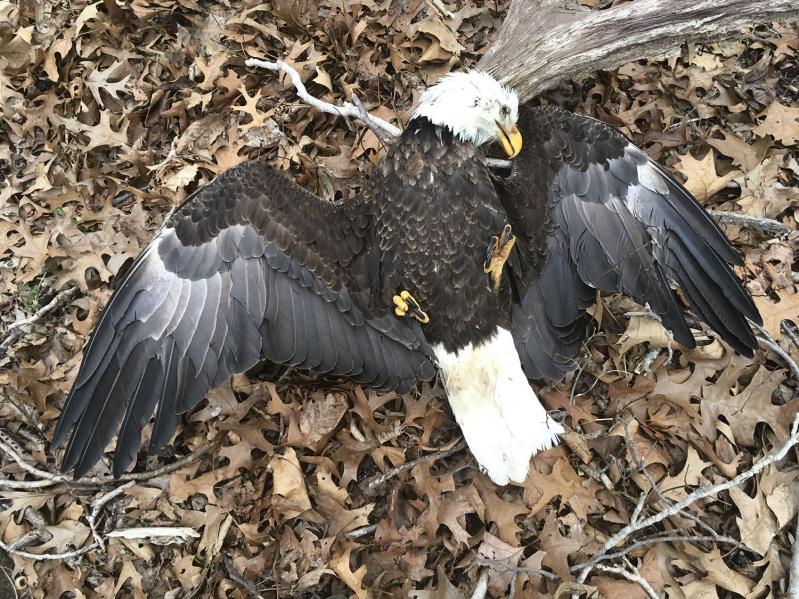“It’s been a bad year for eagles,” Mike Bottini, a wildlife biologist with the Seatuck Environmental Association, said as he stood astride a stand-up paddleboard on Georgica Pond on Aug. 13. He had convened a group of about a dozen kayakers, including outgoing Assemblyman Fred W. Thiele Jr., who will soon be the new executive director of the nonprofit Friends of Georgica Pond Foundation, to survey the shores and coves of the pond in search of an eagle nest.
Bald eagles had nested on the pond since 2020 in a towering pitch pine tree on Goose Creek. The pine had become infected with the southern pine beetle, and the homeowner removed it last autumn when the eagles had departed for the year.
“According to information collected by DEC, a number of trees close to the residence were infested with southern pine beetle. DEC understands the tree was removed after the breeding season and out of concern for public safety due to its proximity to the residence, which is acceptable under DEC guidance,” the New York State Department of Environmental Conservation said in an emailed statement. “DEC recommends that homeowners consult with the DEC’s Region 1 Wildlife office at 631-444-0310 prior to the removal of any trees within 330 feet of a bald eagle nest, including the nest tree, any time of year.”
Mr. Bottini hoped a thorough search of the large trees along the pond shore might indicate that the eagles had chosen another spot on the pond.
The nest of a bald eagle can take up to three months to build, according to allaboutbirds.org. They’re huge. The largest on record was nearly nine feet in diameter and 18 feet tall. Another, “shaped like a wine glass,” weighed nearly two tons. That particular nest was used for 34 years in a row before the tree fell over.
Eagles are long-lived as well. The oldest on record was at least 38. When it was hit by a car in 2015, the band on its leg indicated it had been banded 38 years earlier, in 1977.
Bald eagles are visible in a way that smaller local birds, many of which are now facing even greater struggles, are not, and so their re-emergence from near extinction (they were placed on the Endangered Species List in 1978 and removed in 2007) has been much ballyhooed. They’re also a wonderful example of how intricate ecological webs are, and how humans can’t seem to get out of nature’s way.
Take, for example, the newest bald eagle nest this year that was built in Montauk County Park. In March, Mr. Bottini was there to survey otters when he found a dead adult bald eagle beneath the nest. “Not a mark on it. It had just died,” he said. The bird was sent to the D.E.C. for a necropsy, which indicated that it had died of “extensive hemorrhaging” related to a chemical that is found in rodenticide that is placed in those ubiquitous rat and mouse feeding stations.
“When the rodents eat the material, they don’t die right away. It could take them five days, but in that time, they’re not really moving well, and they get picked off by red-tailed hawks and owls,” Mr. Bottini said. They can get taken by an eagle as well. A further problem for the eagles is that they’ll eat carrion. A dead rat is a good-size free meal for an eagle. More and more, however, they can also be poisonous.
Then there are diseased ducks. A nest at the Mulvihill Preserve in Sag Harbor, right next door to what once was Schellinger’s Spring Farm game preserve, may also be struggling. The ducks at the preserve were culled in 2022 because of a bird flu outbreak. But the eagles in the Mulvihill nest were frequent diners at the game preserve. (“It was like McDonald’s over there for them,” said Ellen Stahl, a paddler who has monitored the Mulvihill nest in the past.)
“Eagles are capable of capturing a lot of things,” Mr. Bottini said, “but they’ll also scavenge to save energy. We think they were feeding on the infected birds there.”
It’s not clear if that nest produced young this breeding season, or if the adults were still present. Frank Quevedo, the executive director of the South Fork Natural History Museum, said SoFo didn’t monitor the nest closely this year, but last year only a juvenile bird was there.
Another example Mr. Bottini described was a bald eagle nest that failed this year off Old Stone Highway in Amagansett. Eggs had been laid and were being incubated by the parents (it takes eagles over a month to incubate the eggs and sometimes up to three months for the young to fledge), but the birds abandoned the nest.
“Coincidentally, and I can’t prove this,” he told the 12 assembled paddlers, “but the East Hampton Town Highway Department went through just before that nest was abandoned. They have the leaf blower of all leaf blowers, so big it’s carried on a trailer. They blew all the leaves from the edge of the road. I asked them, ‘What was the plan there?’ and they said, ‘We want to get the grass to grow.’ Hopefully those eagles will be back.”
But if the paddle at Georgica Pond was any indication, they may not be. The three groups of paddlers, broken into teams of four, failed to find any bald eagle nests along the shoreline.
“The last time I was on Georgica Pond, it was frozen, and I was ice-sailing,” said one gentleman as a group glided past the palaces along the shore.
The group flushed great blue herons, great egrets, ospreys, and double-crested cormorants. Belted kingfishers rattled above, and a pair of spotted sandpipers bobbed from a mostly submerged log that had come to its final resting place along the muddy shoreline. But the eagles, at least for now, are gone.

